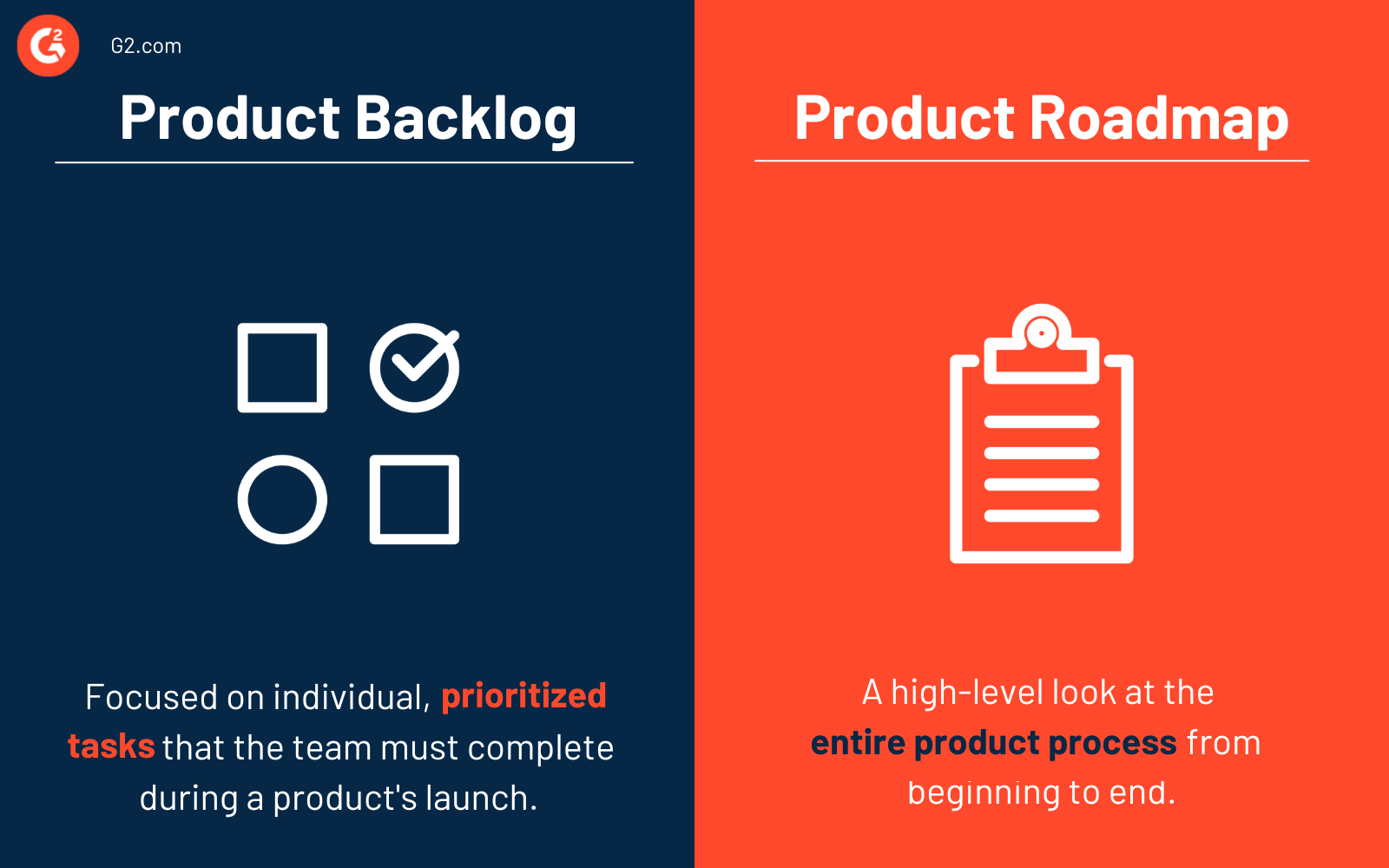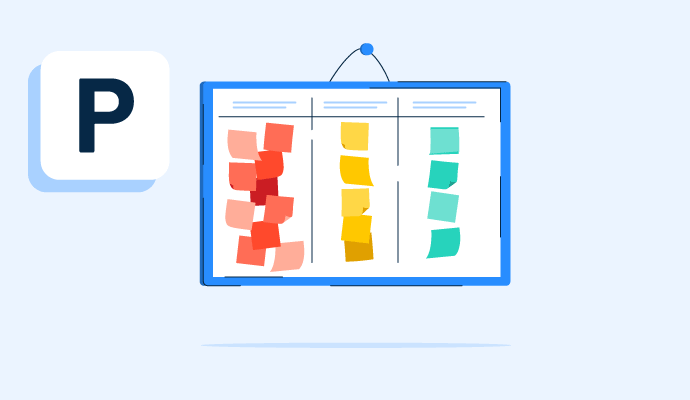What is a product backlog?
A product backlog is a series of tasks that must be completed during a product’s development and launch. These items are ranked from most to least important so teams know how to proceed.
Every product should have its own backlog and, preferably, its own team working on its tasks from idea to a full launch. Some teams choose to employ additional tools like idea management software to organize and assign individual tasks.
The product backlog is an essential part of any project for teams working under scrum or agile guidelines. It ensures that product development is broken down into manageable pieces to keep teams focused on what’s most important.
Basic elements of a product backlog
The individual tasks that make up a backlog depend on the product, but these tasks typically fall under one of four main categories.
- Research and knowledge acquisition is the process of understanding what needs to be done to complete future development. It’s a key part of the backlog because it informs many of the other pieces of the project, like designs and prototyping.
- Technical work, at least some elements, should be near the top of the backlog. If everything is pushed to the end, it becomes more difficult to work through and correct should errors occur.
- Features, also known as the user story, are the critical functions of the product that users want to see. They can be either simple or complex and take up multiple parts of the backlog.
- Bug fixes. To uphold the integrity of the whole project, scrum, and agile teams must adapt to bugs when they arise. Fixes may be small enough to complete straight away, while others may need to wait until the next sprint to work through.
Benefits of a product backlog
The overarching goal of a backlog is to keep the team focused throughout product development. It’s also useful for:
- Increasing team efficiency. With every task required for the project clearly mapped out by priority, teams can focus on the most important areas. Working from the same to-do list also means less time is wasted deciding who is responsible for which parts of the project.
- Making teams more flexible. The backlog often changes throughout product development to meet new needs and concerns. Bugs can occur at any point, or customer feedback on a prototype could make teams reprioritize tasks – or remove them from the process entirely.
- Encouraging additional collaboration. As a result of changing needs in the product process, the backlog isn’t always a fixed list of tasks. This means team members can actively contribute throughout the development lifetime.
Best practices for product backlogs
Backlogs can quickly become difficult to manage as the product moves from idea to prototype, with requests and issues always popping up. To keep the product backlog managed efficiently, teams should:
- Split bigger backlogs into smaller ones. Breaking the backlog into more manageable sections and dispersing what’s necessary to the right people can make a big project feel achievable. Instead of being overwhelmed by all the tasks, team members feel more in control of their workload.
- Remove tasks unneeded. Cutting tasks that are no longer necessary for the project keeps the backlog smaller and gives the team an opportunity to reprioritize other, more important tasks.
- Create a visualization of the backlog. Having a written list to work from is always useful, but some team members work better with a visual that charts progress throughout the project. Something as simple as a wall of sticky notes can keep the whole team aligned about where the project stands.
- Review the task list. To remain flexible, agile and scrum teams should always reflect on whether the backlog is still serving their needs. Priorities for tasks may need to be shifted, while others are thrown out completely. Through careful review, the team wastes no time on unnecessary work.
Product backlog vs. product roadmap
Although both a backlog and roadmap are essential to agile teams, they have important distinctions.

A product backlog is focused on individual, prioritized tasks that the team must complete. The product roadmap, on the other hand, is a high-level look at the entire product process from beginning to end. It ultimately directs the team and is used by executives to decide on a product’s overall direction and strategy.
Keep everyone on the team focused on the same goals using virtual workplace software to replicate physical workspaces – no matter where your employees are.

Holly Landis
Holly Landis is a freelance writer for G2. She also specializes in being a digital marketing consultant, focusing in on-page SEO, copy, and content writing. She works with SMEs and creative businesses that want to be more intentional with their digital strategies and grow organically on channels they own. As a Brit now living in the USA, you'll usually find her drinking copious amounts of tea in her cherished Anne Boleyn mug while watching endless reruns of Parks and Rec.







-1.png)













